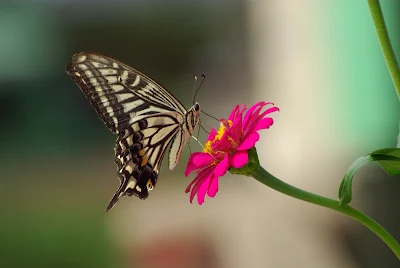Beneficial insects
The delicate balancing
act between increasing crop yields and protecting the environment has become a
top priority in the dynamic world of agriculture. Farmers and researchers alike
are focusing on a more sustainable solution: harnessing the power of beneficial
insects. Traditional pest management techniques have come under growing
scrutiny for their detrimental effects on ecosystems. These minuscule yet
formidable agricultural friends are crucial in fostering pollination, pest
control, and ecosystem health. Our last blog discussed the beneficial insects
for agriculture. I'll provide some tips on how to boost the number of
beneficial insects on our farms in this blog post.
Plant Native Diverse
Crops and Plants: Promote biodiversity by growing different
types of plants. A broad selection of flowers, herbs, and crops will draw and
support a variety of beneficial species because different plants attract
different beneficial insects. Incorporate native plants into your agricultural
landscape by using them. Native plants are more likely to draw and support beneficial
insect populations since they adapt to the local environment.
Provide Shelter and
Habitat: Create areas for the thriving of helpful insects by
providing habitat and shelter. Involve a variety of elements, such as ground
cover plants, fallen leaves or other plant material, and some sections of bare
soil. This can involve leaving patches of vegetation or adding hedgerows and
wildflower strips throughout the fields. These locations will act as habitats
for helpful insects, shielding them from adverse environmental factors and
giving them a place to breed.
Avoid Pesticide Overuse: Reducing the use of broad-spectrum
pesticides, which kill both pests and beneficial insects, to prevent pesticide
overuse. If pesticides are required, choose targeted or natural alternatives
that are less damaging to species that are not the target.
Implement Integrated Pest
Management (IPM): Adopt IPM tactics, which combine a number
of methods to manage pests in a more sustainable manner. IPM techniques include
crop rotation, mechanical pest control, and biological control. Reduce
unnecessary soil tillage and other measures that disturb the habitat of
beneficial insects to avoid habitat disruption. The populations of helpful
insects underground can be harmed by soil disturbance.
Conservation Biological
Control: By using conservation biological management, one can
support pest-controlling natural predators and parasitoids. In order to do
this, favorable conditions must be created for the populations of beneficial
insects, taking into account their life cycles and habitat requirements.
Use beneficial insect
attractants: Some plants, referred to as "trap
crops" or "companion plants," can draw predatory or
pest-repelling beneficial insects. Marigolds, alyssum, and yarrow are a few
examples.
Use pollinator-friendly
practices: Bees are a vital part of the ecosystem. By providing
native bees with places to nest and refraining from using dangerous
neonicotinoid insecticides, you may promote their existence.
Farmer Education and
Participation: The most important part of the conservation of
beneficial insects, most farmers are not aware of these beneficial insects and
their importance in sustainable farming. Inform farmers and agricultural
workers about the value of beneficial insect populations and the effects of
their actions on these populations. Insect-friendly techniques may become more
widely used if awareness and cooperation are promoted.
In this talk, we dig into the realm of helpful insects and examine the scientific rationale for why they are so crucial to sustainable agriculture. We will emphasize their critical role in minimizing insect pressures, decreasing reliance on toxic chemicals, and increasing crop plant output through effective pollination. Additionally, we will look at doable methods that farmers may use to increase the presence and impact of helpful insects on their fields while protecting and promoting the fragile ecosystem balance in the area. Harnessing the potential of beneficial insects offers a glimmer of hope for developing resilient and sustainable agricultural systems as the globe faces rising challenges like climate change and depleting natural resources. Farmers may set the path for a future where productivity and environmental preservation coexist together, bringing in a plentiful harvest for future generations, by welcoming these small allies.


.jpg)

